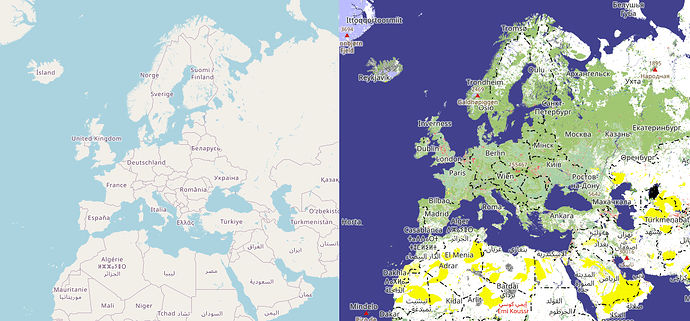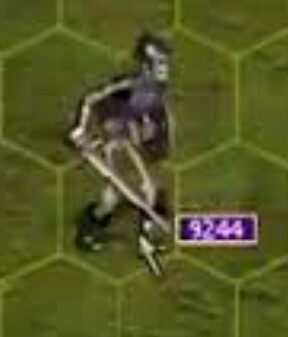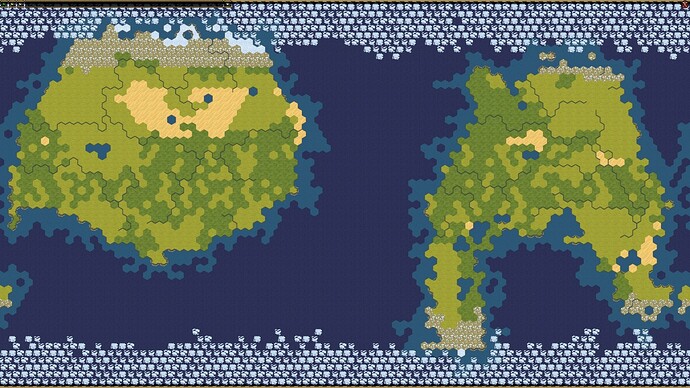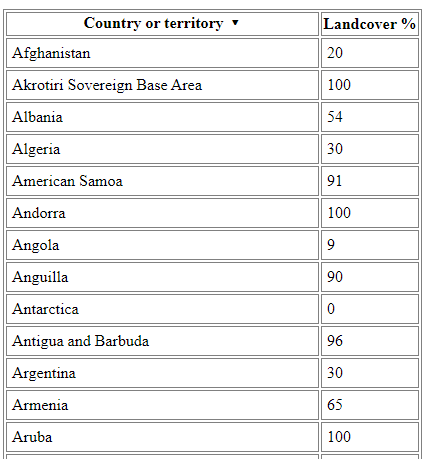Hello everyone,
I’d like to share with you my new project called OpenLandCoverMap. You can find the website here: http://openlandcovermap.org
This is an attempt to create a map based on OpenStreetMap data, which remains non-empty even at zoom levels z0-z8. As you know, standard OSM tiles (“Standard” or “OpenStreetMap Carto”) tend to be empty and uninteresting at these zooms.
The reason for this is that we cannot simply draw existing OSM polygons on z0-z8 because they are too small and there are too many of them. Moreover, a lot of objects in OSM consist of multiple smaller parts like woods or metropolitan areas, which makes it impossible to select polygons based on size alone.
To address this issue, I’ve created a script that generates completely different geometry for overview zooms. The algorithm is quite simple: all OSM polygons with landuse=* and natural=* tags are matched with a hexagonal grid (“h3” currently of resolution 6).
For each cell in the grid, we identify a single tag that best describes the cell based on the largest total area of polygons with each tag.
To make the map more engaging, I’ve also added cities and mountain peaks. However, these points cannot be selected for rendering solely based on population or elevation figures, so we calculate “cartographic importance” for each point. This is done using both discrete isolation and grid cell density methods.
Two additional goals of this project are the following.
Firstly, I want to highlight the fact that there are still many unmapped areas in OSM. OSM quality is [mostly] good in Europe, but other continents are mostly blank. Not a joke, just take a look at the map.
Additionally, I aim to provide some new ideas for the landcover=* discussion. ![]() You can see actual tag usage here: http://openlandcovermap.org/renderedtags.html. Obviously, it’s different a bit from the existing proposals.
You can see actual tag usage here: http://openlandcovermap.org/renderedtags.html. Obviously, it’s different a bit from the existing proposals.
There are no regular automatic updates yet, I hope to make daily (or at least weakly) updates when I move to dedicated server. Currently all processing is performed on my PC.
The source code is available on GitHub if you’d like to take a look at it: https://github.com/Zkir/generalized_landcovers.
Generalized geometry, just in case you would like to make some experiments with it yourself, can be obtained via the download page: OpenLandcoverMap downloads , in shapefile format.
Any comments are welcome!






